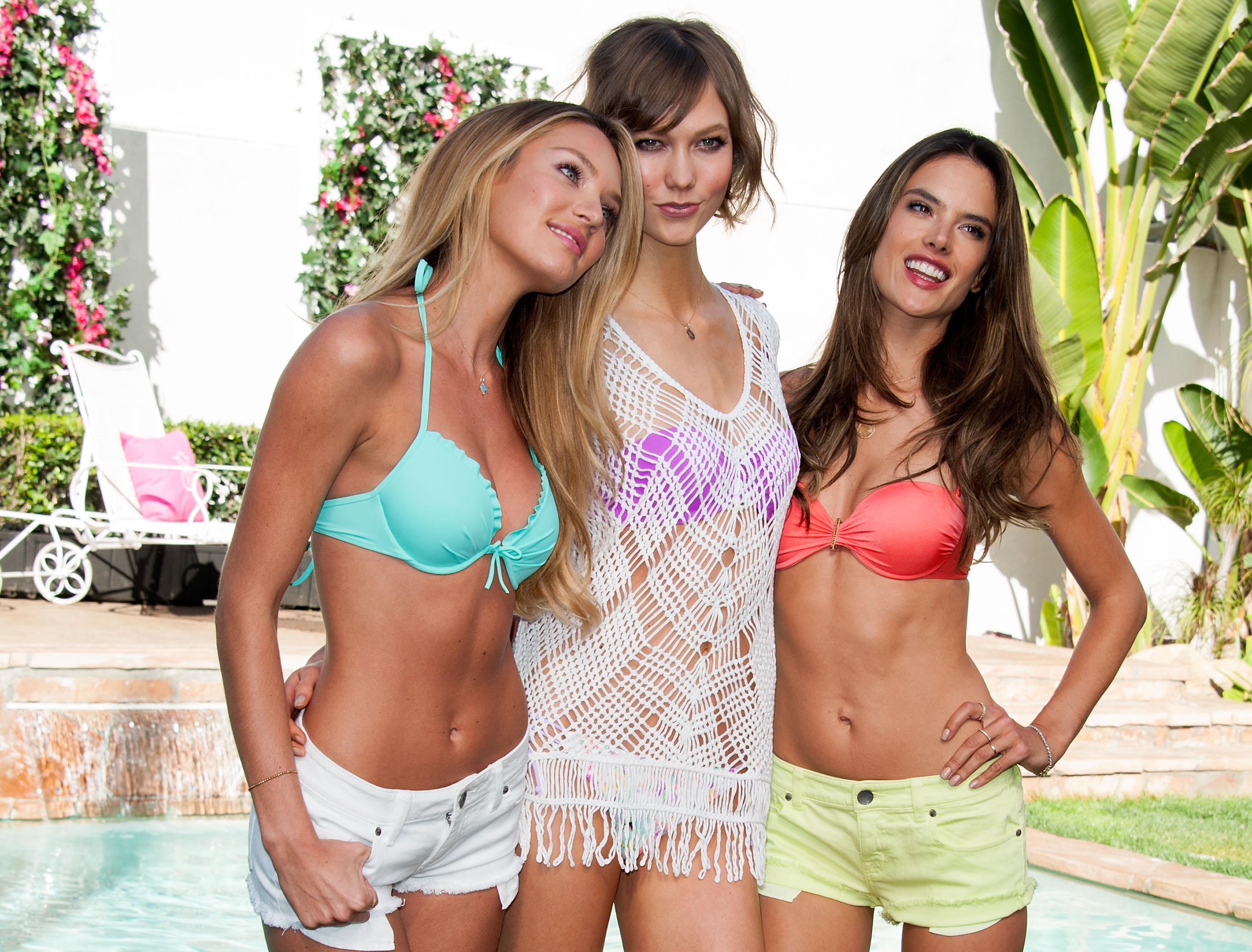Victoria’s Secret recently launched a new advertising campaign with the slogan “Bright Young Things” for their popular Pink line, which is aimed at younger women. It probably would have gone unnoticed, except that Business Insider reported on the CFO of the company admitting that Victoria’s Secret wants to sell to high school girls as well as college girls.
“When somebody’s 15 or 16 years old, what do they want to be?” Chief Financial Officer Stuart Burgdoerfer said at a conference. “They want to be older, and they want to be cool like the girl in college, and that’s part of the magic of what we do at Pink.”This simple and frankly obvious comment was all people needed to go off into a self-righteous huff about how The Sex would be the ruin of a generation of girls. Angry father Evan Dolive wrote a letter to Victoria’s Secret that went viral:
I want my daughter (and every girl) to be faced with tough decisions in her formative years of adolescence. Decisions like should I be a doctor or a lawyer? Should I take calculus as a junior or a senior? Do I want to go to Texas A&M or University of Texas or some Ivy League School? Should I raise awareness for slave trafficking or lack of water in developing nations? There are many, many more questions that all young women should be asking themselves… not will a boy (or girl) like me if I wear a “call me” thong?Apparently, you can fill out applications to major universities or have boys see you in your underpants, but you can’t do both. Having a boyfriend touch you under your clothes is lady-kryptonite that renders you permanently unable to do or care about anything else. Amy Graff, writing for SFGate, responded in a way that made me wonder if she really did manage to skip her own adolescence entirely:
Moms typically pick up their tweens and teens boxes of underwear at big-box stores like Costco, Target and Walmart. Retailers like Gap, Gymboree and Hanna Anderson also carry these items for young girls. The bras and panties are usually fun, colorful and comfy, certainly not skimpy. You might find unicorns, Hello Kitty, or cotton-tailed bunnies on them.Color me convinced that, absent the seductive power of a Victoria’s Secret ad over the adolescent mind, high school girls would have reacted with delight when Mom insisted on buying them four-packs of Hello Kitty underwear at Costco. “I’m so glad that you still think of me as a 10-year-old in pigtails,” the girls would’ve exclaimed. “I never want to grow up!” But they saw a picture of a model with “pink” written across her rear, and now they’re spending all their time looking for underwear that Graff describes as “lingerie you might find at a fetish store in a seedy part of a big city.” BuzzFeed collected reactions from Victoria’s Secret’s Facebook page that continued the epic bout of adult self-delusion:

 Last I checked, most 15- or 16-year-old girls are not in middle school, nor are they really buying their first bras. Also, Steubenville happened because some boys thought torturing a drunk girl was hilarious, not because lacy underthings turn previously asexual adolescents into sex-crazed monsters.
Here’s a reality check: The average American first has sex at age 17, and by age 19, seven out of 10 teenagers are sexually active. Even if they aren’t having sex, most teenagers are still fantasizing about it. That’s a good thing. They need this time to experiment, make their mistakes, and figure out who they are and what they like before the responsibilities of adulthood start to complicate things. As long as they aren’t wearing their sexy panties at the gym, there’s no harm in giving teenagers a little freedom to do the growing up that they need to do.
Last I checked, most 15- or 16-year-old girls are not in middle school, nor are they really buying their first bras. Also, Steubenville happened because some boys thought torturing a drunk girl was hilarious, not because lacy underthings turn previously asexual adolescents into sex-crazed monsters.
Here’s a reality check: The average American first has sex at age 17, and by age 19, seven out of 10 teenagers are sexually active. Even if they aren’t having sex, most teenagers are still fantasizing about it. That’s a good thing. They need this time to experiment, make their mistakes, and figure out who they are and what they like before the responsibilities of adulthood start to complicate things. As long as they aren’t wearing their sexy panties at the gym, there’s no harm in giving teenagers a little freedom to do the growing up that they need to do.
